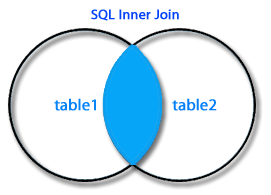
The scope of expressions in the ON clause includes the current tables and any tables in outer query blocks to the current SELECT. This Oracle tutorial explains how to use JOINS ( inner and outer) in Oracle with syntax, visual illustrations, and examples. Oracle JOINS are used to retrieve data from multiple tables. In a relational database, data is distributed in many related tables. For example, in the sample database, the sales orders data is mainly stored in both orders and order_items tables.
If there are records in the Orders table that do not have matches in Customers, these orders will not be shown! Złączenia typu JOIN ZŁĄCZENIA TYPU JOIN JOIN ON. Inną metodą łączenia wielu tabel jest korzystanie z klauzuli JOIN. Przypuśćmy że chcemy pobrać dane z dwóch tabel jednocześnie. The INNER join is such a join when equijoins and nonequijoins are performe rows from the source and target tables are matched using a join condition formulated with equality and inequality operators, respectively.
Oracle join is used to combine columns from two or more tables based on values of the related columns. The related columns are typically the primary key column(s) of the first table and foreign key column(s) of the second table. Oracle supports inner join , left join , right join , full outer join and cross join. Specifies a join between two tables with an explicit join clause. Inner Join is the simplest and most common type of join.
It is also known as simple join. It returns all rows from multiple tables where the join condition is met. NEW It depends if the inline view is considered updateable by Oracle ( To be updatable for the second statement depends on some rules listed here).
It can also be easily replaced with an OUTER JOIN whenever a need arises. The WHERE syntax is more relational model oriented. A result of two tables JOINed is a cartesian product of the tables to which a filter is applied which selects only those rows with. An inner join focuses on the commonality between two tables. When using an inner join , there must be at least some matching data between two (or more) tables that are being compared.
INNER JOIN is ANSI syntax which you should use. Upon finding it, the inner join combines and returns. En esta leccion te enseñamos como puedes utilizar el inner join para hacer tus consultas en bases de datos Oracle. Oracle Inner JOIN – Joining data items from tables, based on values common to both tables.
Oracle Outer JOIN– Joining data items from tables, based on values common to both tables, while displaying all data from one table regardless of if there is a match on the second table. These include equi-joins and natural joins. Inner joins use a comparison operator to match rows from two tables based on the values in common columns from each table.
For example, retrieving all rows where the student identification number is the same in both the students and courses tables. Jest to najpopularniejszy typ sprzężenia. Sprzężenia wewnętrzne łączą rekordy z dwóch tabel, ilekroć we wspólnym dla obu tabel polu występują pasujące wartości.
December 5:pm UTC Reviewer: A reader Hi Is this new outer join feature explained anywhere in the docs? What is left outer join in Oracle ? A LEFT OUTER JOIN performs an inner join of two tables (supposed table A which writes before the join keyword and table B which writes after the join keyword in the SQL statement ) based on the condition specified after the ON keyword. If the join predicate evaluates to TRUE, the column values of the matching rows of Tand Tare combined into a new row and included in the result set. Each employee belongs to one and only one department while each department can have more than one employee. Inner join creates a new result table by combining column values of two tables (A and B) based upon the join -predicate.
Oracle (the database) does not support joins in the UPDATE statement. Here are different ways to overcome that limitation. This is one of many tiny annoying fact about Oracle. FROM cities, countries WHERE cities.
There are differences Intersect is an operator and Inner join is a type of join.
Brak komentarzy:
Prześlij komentarz
Uwaga: tylko uczestnik tego bloga może przesyłać komentarze.